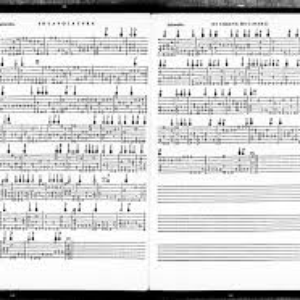
| Trackimage | Playbut | Trackname | Playbut | Trackname |
|---|---|---|---|---|
| 83101420 | Play | Ballo detto il Conte Orlando | 00:00 Tools | |
| 83101419 | Play | Saltarello | 00:00 Tools | |
| 83101418 | Play | Fantasia | 00:00 Tools | |
| 83101421 | Play | Saltarello del predetto ballo | 00:00 Tools | |
| 83101424 | Play | Fantasia prima | 00:00 Tools | |
| 83101426 | Play | Fantasia nona | 00:00 Tools | |
| 83101422 | Play | Pass'e mezo (Passamezzo) | 00:00 Tools | |
| 83101428 | Play | Canzone a quattro di Gioseppe Guami | 00:00 Tools | |
| 83101427 | Play | Fantasia terza | 00:00 Tools | |
| 83101429 | Play | Saltarello primo | 00:00 Tools | |
| 83101433 | Play | Pass'e mezzo in sei modi | 00:00 Tools | |
| 83101423 | Play | Gagliarda | 00:00 Tools | |
| 83101431 | Play | Saltarello secondo | 00:00 Tools | |
| 83101430 | Play | Fantasia quinta | 00:00 Tools | |
| 83101436 | Play | Pass'e mezzo in tre modi | 00:00 Tools | |
| 83101435 | Play | Gagliarda in tre modi | 00:00 Tools | |
| 83101434 | Play | Saltarello sesto | 00:00 Tools | |
| 83101425 | Play | Fantasia decima | 00:00 Tools | |
| 83101438 | Play | Fantasia XIV | 00:00 Tools | |
| 83101437 | Play | Fantasia ottava | 00:00 Tools | |
| 83101439 | Play | Gagliarda in quattro modi | 00:00 Tools | |
| 83101441 | Play | Saltarello quarto | 00:00 Tools | |
| 83101432 | Play | Ballo Detto "Il Conte Orlando" - Saltarello | 00:00 Tools | |
| 83101440 | Play | Fantasia XV | 00:00 Tools | |
| 83101442 | Play | Saltarello settimo | 00:00 Tools | |
| 83101443 | Play | Fantasia I | 00:00 Tools | |
| 83101445 | Play | Lute music - Italy: Saltorello - Ballo detto il Conte Orlando - Saltorello | 00:00 Tools | |
| 83101444 | Play | Fantasia IX | 00:00 Tools | |
| 83101447 | Play | Ballo detto il Conte Orlando - Fantasia | 00:00 Tools | |
| 83101446 | Play | Simone Molinaro: Lute music - Italy - Saltorello - Ballo detto il Conte Orlando - Saltorello | 00:00 Tools | |
| 83101448 | Play | Ballo, Saltarello | 00:00 Tools | |
| 83101449 | Play | Canzone Francese: No. 4. Ballo detto il Conte Orlando | 00:00 Tools | |
| 83101450 | Play | Fantasia X | 00:00 Tools | |
| 83101451 | Play | Ballo detto 'Il Conte Orlando' - Saltarello dell predetto ballo | 00:00 Tools | |
| 83101452 | Play | Saltarello - Ballo detto il Conte Orlando - Saltarello | 00:00 Tools | |
| 90252682 | Play | Her Theme | 00:00 Tools |

-
- 3,810
- plays
-
- 545
- listners
-
- 3810
- top track count
Simone Molinaro (ca. 1565 - ca.1634) Italian composer. He was maestro di cappella of S. Lorenzo cathedral, Genoa, by 1602 through 1617. He subsequently took a similar position at the Cappella di Palazzo, a post he held until his death around 1634. A connoisseur of contemporary Italian music; editor of madrigals by Gesualdo , issuing a six volume edition. in score. in 1613 and compiler of two volumes of sacred contrafacta of other madrigals. His knowledge of these works is evident in both the form and the musical language of his own compositions, written for lute (dances, fantasias, and intabulations of vocal works) or for voices (especially motets and madrigals). His own canzonets, and church music for from one to ten voices, show the influence of Gesualdo in their declamatory style and advanced chromatic harmonies; the latter are also to be found in his 1599 lute book. This includes fantasias, and important examples of the variation suite consisting of groups of dances whose separate sections are all based on the same chord progression. Read more on Last.fm. User-contributed text is available under the Creative Commons By-SA License; additional terms may apply.